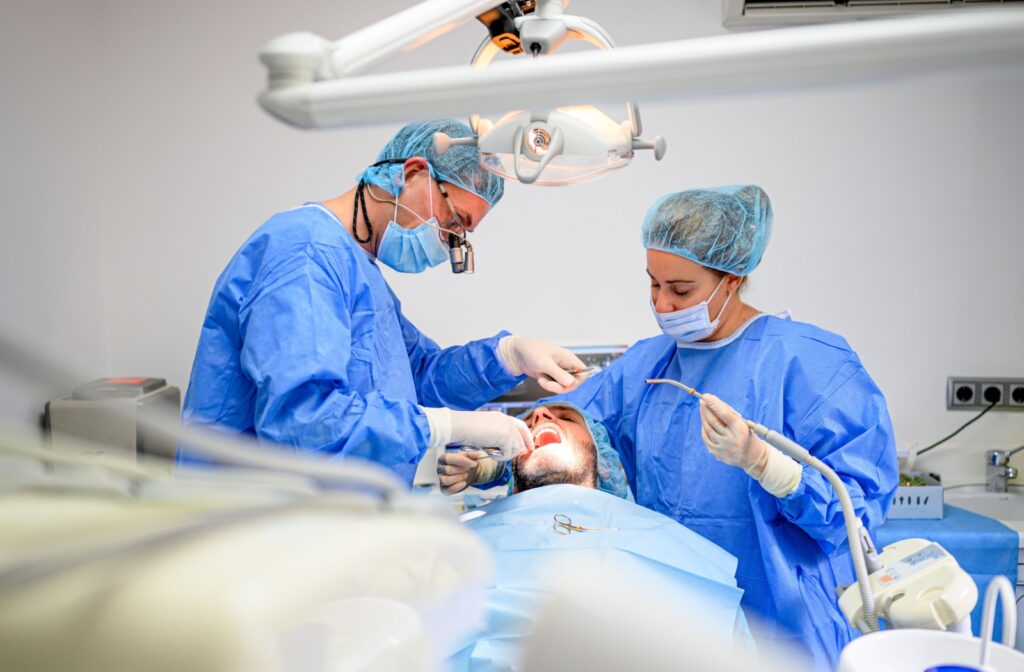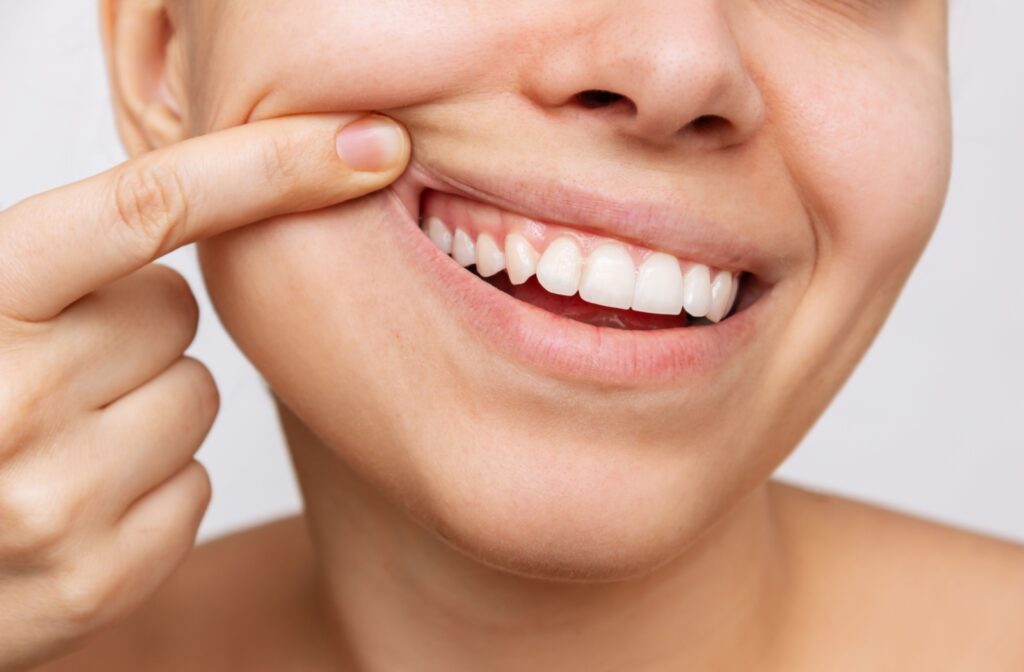Gum disease isn’t directly contagious, but the bacteria that cause it can be passed between people. This makes good oral hygiene, regular dental check-ups, and awareness of gum health even more important for yourself and those around you.
Gum disease is often a preventable condition that can progress if untreated, so understanding its causes, symptoms, and treatments can help manage the condition and keep your mouth healthy.
What is Gum Disease?
Gum disease, also known as periodontal disease, is an inflammatory condition that affects the gums and, in advanced stages, the supporting structures around the teeth. It develops gradually, typically starting as gingivitis—an inflammation of the gums.
Gingivitis can be easily reversed with good oral care and regular cleanings. However, if left untreated, it can progress to periodontitis, where the infection extends to the bones and tissues that support the teeth. Periodontitis can lead to tooth loss and has been linked to other health issues, such as cardiovascular disease and diabetes.
Gum disease begins when plaque, a sticky film of bacteria, builds up on teeth and along the gum line.
If not removed, this plaque hardens into tartar, which can only be removed by a dental professional. As tartar builds up, it can lead to inflammation and infection in the gum tissue. The longer gum disease goes untreated, the more damage it can cause to the gums and supporting structures. This is why early intervention is so important.
Preventing and treating gum disease also contributes to overall health. Research has shown that inflammation and bacteria associated with periodontal disease can affect other parts of the body. Treating gum disease protects oral health and potentially reduces risks to other areas of health.
Causes & Symptoms of Gum Disease
Many factors can contribute to this condition:
- Poor Oral Hygiene: Inadequate brushing and flossing allow plaque to build up on the teeth and gums, leading to gingivitis and periodontitis.
- Smoking & Tobacco Use: Tobacco products significantly increase the risk of gum disease and hinder the healing process.
- Genetics: Some individuals may be genetically predisposed to gum disease, regardless of their oral hygiene practices.
- Medical Conditions: Conditions like diabetes and certain immune disorders can make certain individuals more vulnerable to gum disease.
- Stress: High stress levels can weaken the immune system, making it harder for the body to fight off infections like periodontal disease.
Common symptoms of gum disease include:
- Red, Swollen, or Tender Gums: Inflammation is a common sign of gingivitis and early-stage gum disease.
- Bleeding Gums: Gums that bleed during brushing or flossing may indicate gingivitis.
- Persistent Bad Breath: A buildup of bacteria can cause chronic bad breath or a bad taste in the mouth.
- Receding Gums: As gum disease progresses, the gums may recede or pull away from the teeth.
- Loose or Shifting Teeth: Advanced periodontitis can cause teeth to become loose or change position in the mouth.
Treating Gum Disease
The treatment for gum disease varies depending on its severity. In its early stages, gingivitis can be reversed with professional cleanings and proper oral hygiene. Your dental hygienist or dentist will remove plaque and tartar buildup to create a clean surface for your gums to heal. This is often combined with advice on effective brushing and flossing techniques.
If gum disease has progressed to periodontitis, more intensive treatments may be necessary. Scaling and root planing is a common non-surgical procedure in which the dentist or hygienist cleans below the gum line to remove plaque and tartar from the roots of the teeth. This procedure helps reduce gum inflammation and encourages the gums to reattach to the teeth.
In some cases, your dentist may recommend antibiotics to control the infection, either applied directly to the gums or taken orally. These antibiotics can target the bacteria causing inflammation and infection, assisting in healing.

For advanced periodontitis, surgical options may be necessary. Procedures like flap surgery, where the gums are lifted back to remove tartar or bone grafts to repair damaged bone tissue, can effectively manage severe cases. Laser therapy is another emerging option targeting infected gum tissue and bacteria with minimal invasiveness.
Working closely with your dental team will help determine the best course of treatment for your unique needs. Treating gum disease promptly can stop further progression and support long-term gum health.
Prevent Gum Disease Before it Starts
The good news is that gum disease is largely preventable.
Consistent oral hygiene practices, like brushing twice daily with fluoride toothpaste, flossing regularly, and using an antibacterial mouthwash, can go a long way to keeping gum disease at bay. Removing plaque regularly prevents it from hardening into tartar and causing inflammation.
A healthy diet can also benefit gum health. Foods rich in vitamins and minerals, especially Vitamin C, help maintain healthy gums and a strong immune system. Avoiding excessive sugar and acidic foods can help protect your teeth and gums from bacteria and plaque buildup.
Regular dental check-ups are crucial for maintaining gum health. During these visits, your dentist can catch early signs of gum disease and address them before they become more severe. Professional cleanings are key in removing tartar that can’t be removed with regular brushing, thereby keeping your gums healthy.
Book Your Next Dental Appointment Today
Whether you’re looking to prevent gum disease or have concerns about your gum health, Dentistry on Danforth is here to help. Our team is committed to providing the highest level of care and personalized advice to support your oral health at every stage. Schedule an appointment today to ensure your gums—and your overall health—are in excellent hands.


